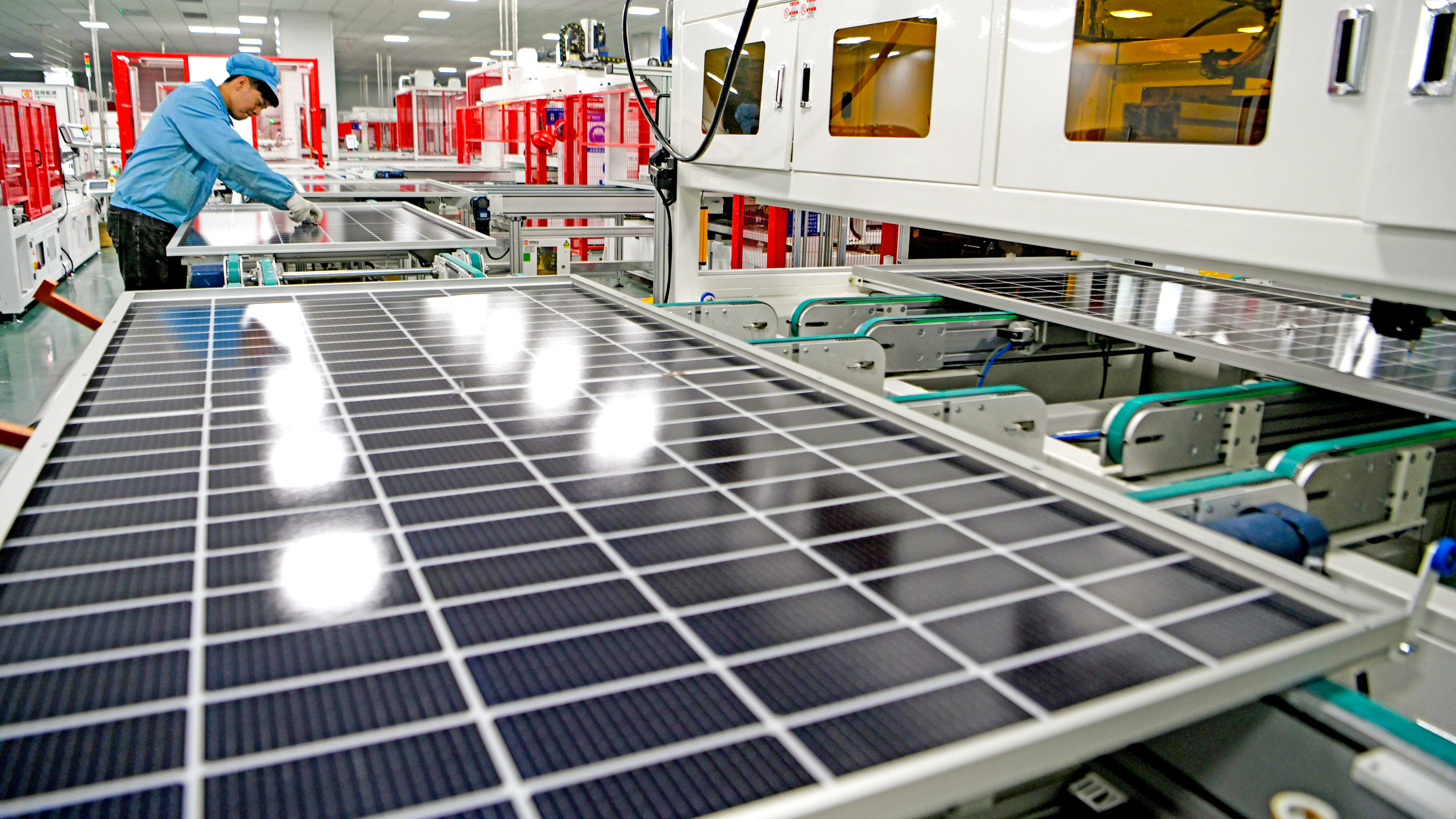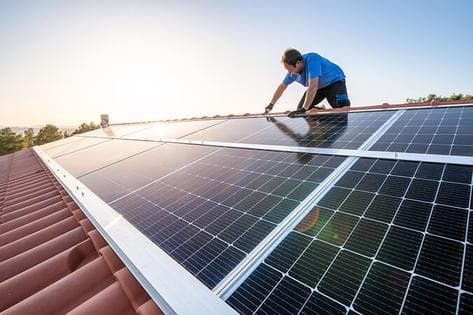Solar For New Construction PA: Our Company Focuses On The Installation And Management Of Photovoltaic Energy Systems
History and Development of Photovoltaic Panel Companies
The beginning of solar panel companies can be traced back to the 1800s when Alexandre Edmond Becquerel found the photovoltaic result. Would he have envisioned how his discovery would transform the method we harness energy?
Early Starts

In 1954, Bell Labs developed the first useful photovoltaic cell. This marked a substantial turning point in the history of solar energy. They were at first used to power space satellites, but who understood this was just the start?
Evolution and Growth
- In the 1970s, an energy crisis resulted in increased interest in renewable resource sources, consisting of solar energy.
- By the 1990s, improvements in innovation and increasing ecological awareness resulted in the growth of solar panel companies globally.
A New Period
As we went into the 21st century, the solar industry witnessed a rapid growth. The need for tidy and renewable energy produced a new age in the photovoltaic panel industry.
Interesting Truths
- The world's very first solar power station was constructed in 1982 in Hisperia, California.
- By 2019, solar power had become the world's fastest-growing source of power.
Indeed, the journey of solar panel companies has been exceptional, hasn't it? The future holds immense potential, with continuous improvements paving the way for a sustainable future. Can we picture a world powered completely by solar energy?
Moving on
Today, photovoltaic panel business continue to innovate, pursuing more efficient and affordable options. The advancement of solar power has actually come a long way, and yet, the journey has actually simply started.
The Core of Photovoltaic Panel Production
Ever wonder what goes here into producing those glossy, sun-loving photovoltaic panels? The process is as outstanding as completion product (Top Rated Solar Installers PA). High-purity silicon, the main component in solar panels, goes through numerous changes to guarantee its effectiveness and resilience
From Sand to Silicon
Crystalline silicon, the backbone of many photovoltaic panels, originates from simple sand. It's a remarkable journey, isn't it? The sand goes through a high-temperature reaction with carbon to form silicon. This isn't just any silicon. The silicon utilized in photovoltaic panels is "solar-grade," with a purity of 99.9999%. It's this purity that enables the panels to effectively convert sunshine into power.
Ingot Formation
Once the silicon is pure enough, it's time to form ingots. Picture a big, cylindrical block of strong silicon. How is this accomplished? Through a process called Czochralski procedure, where the silicon is melted and then gradually recrystallized. It's a sluggish dance of science, resulting in a solid item that is nearly as pure as the raw silicon itself.
Slicing into Wafers
The ingots are then sliced into wafer-thin pieces, like slicing a loaf of bread. Each slice is a potential solar cell, waiting to harness the power of the sun. Did you understand that the silicon wafers are only about 200 micrometers thick? That's about half the thickness of a human hair! The process requires accuracy and perseverance, however the outcome is a set of wafers ready to be turned into solar batteries.
Producing Solar Battery
With the wafer ready, it's time for the magic to occur. The silicon wafer is 'doped' with other components like phosphorous and boron to produce an internal electric field. It's this field that makes it possible for the conversion of sunshine into electricity. Complex, isn't it?
Assembly and Quality Control
Solar battery resemble puzzle pieces that come together to form a photovoltaic panel. The cells are soldered together in a grid-like pattern, then covered with a protective layer of glass. The final step includes rigorous quality assurance checks. After all, it's vital that every photovoltaic panel carries out at its peak, wouldn't you agree?
Expert Tip
Constantly remember that even the most optimally made photovoltaic panel can lose efficiency due to dirt and particles build-up. Routine cleaning can substantially enhance your panels' performance.
Comprehending the Environmental Impact of Photovoltaic Panel Companies
Ever considered the ecological footprint of a photovoltaic panel business? Green innovation, such as solar, has transformed our energy landscape, however what about the behind-the-scenes effect?
The Manufacturing Process: A Double-Edged Sword
The manufacturing procedure for photovoltaic panels requires a considerable amount of energy. This process, known as 'em bodied energy', can be viewed as a kind of 'energy debt'. It's a little like obtaining today's sunshine to power tomorrow's energy needs. Worry not, the energy repayment time is typically shorter than you 'd believe!
- The energy payback period for solar panels is usually 1-4 years.
- After this duration, the energy produced is basically carbon-free.

Life After Decommission
And what takes place when a photovoltaic panel reaches completion of its life-span? Can it simply be tossed into the garbage? No, that wouldn't be extremely green, now, would it?
A practical service is recycling. While photovoltaic panel recycling is still in its infancy, it holds a world of capacity. Recycling not just keeps materials out of landfills but likewise minimizes the requirement for new basic materials.
Accountable Sourcing: More Than A Buzzword
Where does the silicon originated from, you ask? The industry's need for silicon and uncommon minerals can lead to destructive mining practices. Accountable sourcing is therefore imperative to lower damaging environmental effects.
Lowered Carbon Emissions: The Larger Image
Let's not forget the bigger image: solar energy considerably minimizes carbon emissions. As soon as set up, solar panels produce tidy, renewable resource, balancing out their initial manufacturing footprint.
Simply put, the ecological impact of photovoltaic panel business is a complicated concern. However, with accountable practices, the guarantee of a cleaner, greener future is well within our grasp.

Financial Efficiency and Market Share of Solar Panel Companies
Ever wondered why some photovoltaic panel business - Residential Solar Panels PA outperform others in the market? What sets them apart? The crucial lies in their financial efficiency and market share
Financial Performance: A Crucial Indicator
Financial performance plays a critical function in the success of any company. For solar panel companies, it's no different. Strong financial performance makes it possible for these business to buy advanced technology, research, and advancement, thus creating top quality, effective solar panels.
However how do they achieve this? With a concentrate on cost effectiveness and tactical investments. Business that manage to lower production expenses without compromising on quality tend to fare much better in the market.
Market Share: A Procedure of Success
Market share, on the other hand, is a direct reflection of a company's appeal among customers. A high market share indicates more house owners are choosing their photovoltaic panels over competitors.
What's the secret recipe for acquiring a larger market share? It boils down to client complete satisfaction and brand name credibility. Business that prioritize client needs and keep a favorable brand name image are most likely to capture a larger share of the marketplace.
- Customer Satisfaction: Solar panel business that provide trustworthy items and exceptional consumer service tend to have higher consumer complete satisfaction rates.
- Brand name Reputation: A strong brand reputation is built in time through consistent delivery of quality services and products.
Financial Performance and Market Share: The Symbiotic Relationship
Surprisingly, the relationship between financial efficiency and market share is not one-sided. They feed off each other. A strong monetary efficiency can increase a business's market share, while a high market share can improve monetary efficiency.
As a solar panel company, stabilizing these two elements is essential for long-term success. A business that neglects either of them might discover it tough to preserve its position in the competitive solar industry.
The Takeaway
So, what does all this mean for you? Whether you're a property owner seeking to install solar panels or a financier considering the solar market, comprehending the financial performance and market share of photovoltaic panel companies is vital. They are key signs of a business's health and capacity for future growth.